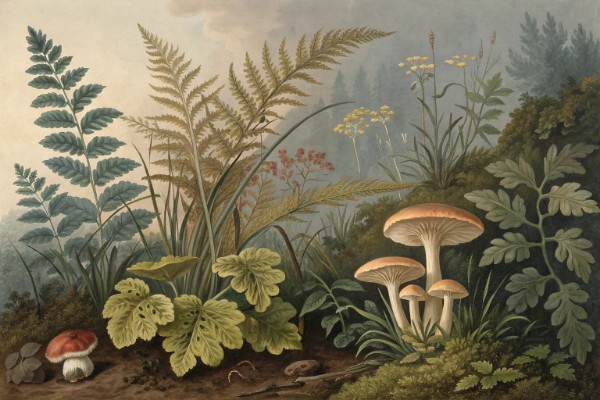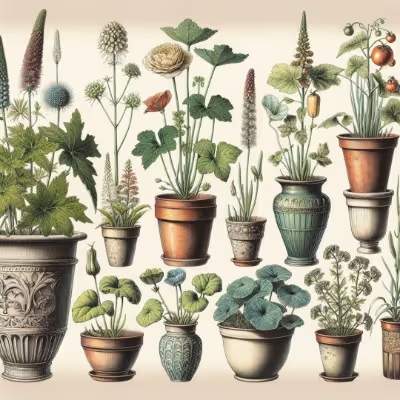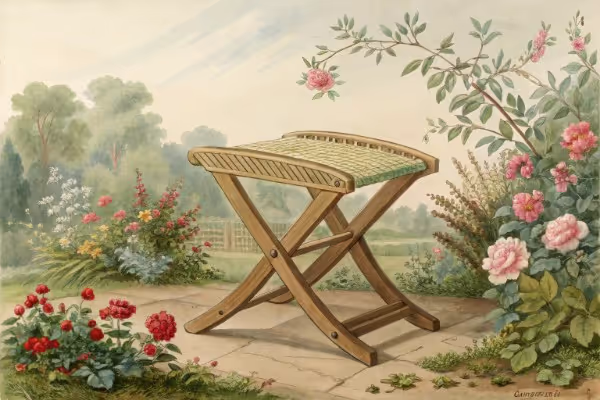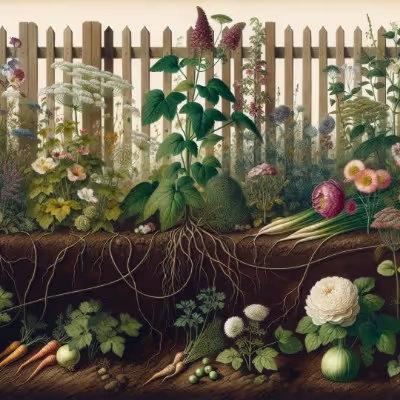Southern European Plants to Grow a Mediterranean Garden
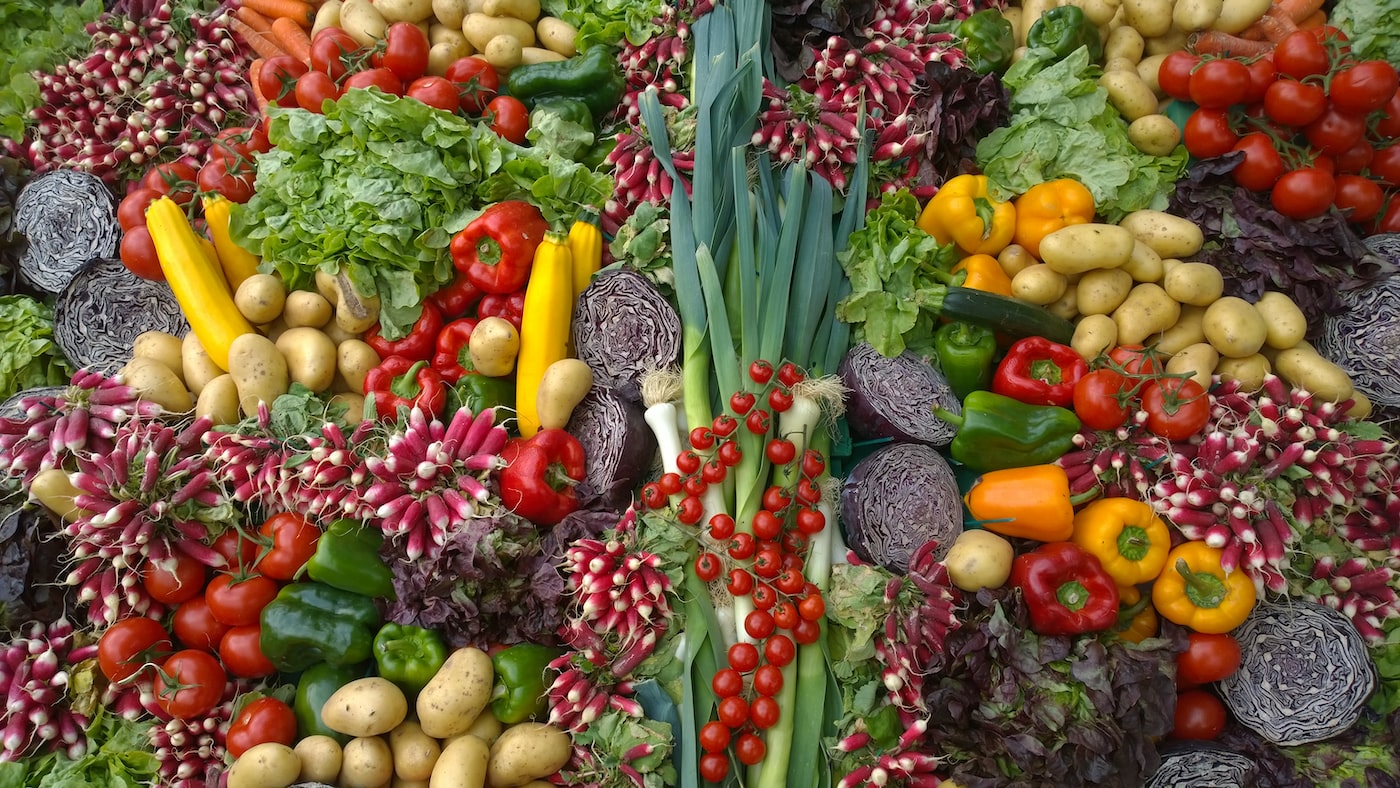
Southern European Plants
Capture the warmth and character of the Mediterranean by planting authentic Southern European plants like aromatic lavender, hardy rosemary, and vibrant bougainvillea. These resilient natives soak up full sun, withstand dry summers, and demand minimal fuss. To build an inviting garden rooted in Southern Europe, choose plants that match your soil and space—read on to discover the top picks that'll thrive effortlessly in your backyard.
Cheatsheet: Mediterranean Plant Picks & Growing Steps
🌞 Plants for Mediterranean Flair
- Olive tree (Olea europaea) – Drought-hardy, yields olives; up to 400 years lifespan.
- Lavender (Lavandula angustifolia) – Fragrant, attracts pollinators, culinary uses.
- Rosemary (Rosmarinus officinalis) – Low water needs, culinary, medicinal.
- Fig (Ficus carica) – Sweet fruit, rich in fiber & calcium.
- Rockrose (Cistus) – Long blooms, supports bees.
- Oleander (Nerium oleander) – Dense evergreen, vibrant flowers. Note: Poisonous.
- Thyme (Thymus vulgaris) – Edible groundcover, boosts immunity.
- Agapanthus – Blue or white blooms, heat-tolerant.
- Laurel bay (Laurus nobilis) – Culinary, bay leaves, evergreen privacy.
🛠️ Tools and Products You’ll Need
- Hand trowel, spade
- Pruning shears
- Mulch (gravel or bark)
- Compost or organic soil improver
- Drip irrigation or soaker hose (saves 60% water vs. overhead spray)
- pH meter (plants favor pH 6-8)
🌱 Planting Steps
- Choose full sun: 6–8 hrs daily. Min. 50°F (10°C) winters, up to 104°F (40°C) summers.
- Prep soil: Mix sand, gravel, compost for drainage. Target pH: 6-8.
- Space plants: Allow airflow; 18 in. (45 cm)+ between shrubs.
- Water deeply: 1x/week; let soil dry between. Drip irrigation saves water.
- Mulch: 2 in. (5 cm) layer suppresses weeds, retains moisture.
- Prune annually: Remove dead wood after flowering for shape & vigor.
- Fertilize sparingly: Mediterranean plants thrive in lean soil; overfeeding reduces aroma & flavor.
🍋 Edible & Health Benefits
- Olives, figs, rosemary, thyme: Antioxidants, healthy fats, vitamins A & E.
- Fresh herbs support immunity, heart health, digestion.
- Homegrown produce cuts food miles, boosts self-sufficiency.
⚡ Quick Stats
- Native Mediterranean plants use up to 70% less water than turf grass.
- Pollinator visits increase by 30%+ with lavender, rosemary, thyme.
- Average lifespan olive tree: 300–400 years.
Why Southern European Plants Are Ideal for a Mediterranean Garden
Years ago, while wandering the sun-drenched hillsides of Provence, I marveled at the thriving rosemary and lavender hedges lining stone pathways. Instantly, I knew I wanted to recreate that earthy charm in my own garden.
Southern European plants offer distinct advantages: they're drought-tolerant, sun-loving, and aromatic. Perfect companions for Mediterranean-style gardens.
Top Plants That Flourish in Southern Europe's Warmth
1. Lavender (Lavandula angustifolia)
Lavender remains my garden's signature fragrance, perfume drifting lightly on warm breezes. This silvery-green perennial prefers full sun and well-draining soil, flourishing with minimal watering.
- Care tips: Prune immediately after blooming to maintain a compact, bushy form.
- Ideal growing conditions: Full sun, sandy or gravelly soil, USDA zones 5-9.
2. Rosemary (Rosmarinus officinalis)
Rosemary offers culinary delight alongside ornamental beauty. I frequently harvest sprigs for grilled vegetables or roasted meats, savoring its piney, peppery aroma.
- Care tips: Avoid overwatering; rosemary detests soggy feet.
- Ideal growing conditions: Sunny location, alkaline well-drained soil, USDA zones 7-10.
3. Olive Tree (Olea europaea)
Planting olive trees transformed my garden into something timeless, evoking afternoons spent sipping wine beneath their silvery leaves in Tuscany. Hardy and elegant, olives thrive in warm climates.
- Care tips: Provide good drainage and consider containers if winters drop below 25°F (-4°C).
- Ideal growing conditions: Full sun, rocky or sandy soil, USDA zones 8-11.
"Olive trees can live for hundreds of years, gracefully maturing and becoming more beautiful with age. Plant one today, and your grandchildren might enjoy its shade."
4. Cypress (Cupressus sempervirens)
Nothing screams Southern Europe like the tall, slender silhouette of cypress trees lining a garden path. I've used them frequently as focal points or natural privacy screens.
- Care tips: Plant in exposed, sunny areas; they're wind-resistant and drought-tolerant.
- Ideal growing conditions: Dry, sandy soils, full sun, USDA zones 7-10.
5. Bougainvillea (Bougainvillea spectabilis)
Bougainvillea's vivid bracts drape over trellises and arches, conjuring memories of lazy afternoons in Santorini. It's ideal for adding bursts of intense color.
- Care tips: Allow soil to dry between waterings; drought stress promotes vibrant blooms.
- Ideal growing conditions: Sunny spots, minimal moisture, protection from frost, USDA zones 9-11.
Herbs Bringing Aroma and Flavor to Your Garden
Thyme (Thymus vulgaris)
Thyme grows in dense mats, carpeting walkways in aromatic splendor. I sprinkle fresh thyme over roasted potatoes regularly, elevating simple dishes effortlessly.
- Care tips: Full sun, gritty soil, minimal watering.
- Ideal growing conditions: USDA zones 5-9.
Sage (Salvia officinalis)
Sage's velvety gray-green leaves add texture alongside scent. My sage plants thrive with little fuss, rewarding me with richly flavored leaves perfect for teas or stuffed ravioli.
- Care tips: Avoid overwatering and prune in early spring.
- Ideal growing conditions: Full sun, sandy soil, USDA zones 5-9.
Design Tips for Your Mediterranean Garden
Mix plants of varying heights and textures to create visual interest. Combine bold evergreens like olive and cypress with lower-growing aromatic plants to evoke authentic Southern European charm.
Use gravel or stone paths, ceramic pots, and rustic wooden structures to enhance the Mediterranean vibe. Incorporate natural stone seating areas to enjoy leisurely evenings outdoors.
"A Mediterranean garden thrives through simplicity, sensory delight, and embracing the natural affinity of Southern European plants for sunny, dry conditions."
Planting these distinctive species allowed me to recreate the easygoing charm and rustic elegance of Southern Europe in my own backyard. Begin with a few choice varieties, and watch your garden gradually become a sunny retreat reminiscent of the Mediterranean coast.

Want smarter plant choices? 🪴
Frequently Asked Questions About Southern European Plants
Which plants best tolerate the hot, dry summers typical of Mediterranean climates?
Lavender, Rosemary, and Oleander thrive naturally in the hot, sunny conditions of Southern Europe. These plants require minimal water once established and can easily endure temperatures up to 95°F (35°C).
How often should Southern European plants be watered?
Once established, most Southern European plants prefer infrequent yet deep watering. A general rule is to water deeply once every 7–10 days during peak summer heat, ensuring soil moisture reaches down at least 6 inches (15 centimeters).
Are Southern European plants suitable for container gardening?
Yes, many Mediterranean native plants such as Citrus trees, Bougainvillea, and Bay Laurel flourish in containers. Containers allow gardeners in colder regions to move plants indoors during winter months, providing protection from temperatures below 40°F (4°C).
What type of soil and drainage do these plants require?
Most Southern European plants favor well-draining, moderately fertile, sandy or rocky soil. To improve drainage in heavier clay soils, incorporate organic matter or coarse sand before planting.
Do these plants require frequent pruning or special maintenance?
Most Mediterranean plants benefit from annual pruning to maintain shape and encourage healthy growth. Prune herbs such as Sage, Thyme, and Lavender after blooming to promote air circulation and vigor, while shrubs like Oleander respond well to late-winter pruning.
Can Southern European plants withstand occasional frost?
Many Mediterranean plants tolerate brief periods of frost down to approximately 20–25°F (-4 to -6°C), provided they have good drainage and are established. However, sensitive plants such as Bougainvillea and Citrus trees require frost protection or indoor shelter during colder weather.
Building a Mediterranean garden with Southern European plants isn’t about chasing postcard perfection—it’s about resilience, flavor, and a certain sun-baked honesty. Oliviers, lavenders, rosemary, and rockrose don’t just survive; they thrive in lean soil and relentless heat, offering fragrance and texture where lesser plants wilt. These plants are tough, but they reward you with low-maintenance beauty and a sense of place that’s unmistakably Mediterranean. If you’re working in a hot climate, check out the zone 11 planting guide for practical advice on what will truly flourish. Remember, with Southern European plants, less fuss means more time to savor the garden—glass of wine optional, but highly recommended.
Health Benefits of Growing Southern European Plants at Home
Rosemary: Natural Cognitive Booster
Studies indicate rosemary inhalation significantly improves memory retention and concentration speed. Keep fresh sprigs indoors for immediate aromatherapy.
Sage: Potent Antioxidant Source
- Fresh sage leaves brewed into tea reduce inflammation and support digestion.
- Consuming sage regularly provides polyphenolic compounds beneficial for maintaining blood sugar balance.
Thyme: Antimicrobial Powerhouse
Thyme leaves steeped into warm liquid ease respiratory discomfort effectively; planting at home ensures continuous supply during cold season.
Lavender: Proven Stress Reducer
- Clinical trials show inhaling lavender fragrances lowers cortisol (a stress hormone) significantly.
- Grow in sunny, dry garden spots for optimal aromatic potency; fresh blossoms dried and stored extend fragrance availability year-round.
Fennel: Nutrient-rich Digestive Aid
Fennel bulbs and seeds supply dietary fiber, potassium, vitamin C, and magnesium. Integrate fresh fennel slices in salads and teas to soothe indigestion and reduce bloating.
Oregano: Immune System Enhancer
- Rich in carvacrol and thymol, oregano offers powerful antibacterial and antiviral protection.
- Harvest fresh leaves regularly and incorporate into dishes to maintain robust immunity naturally.
Fig Leaves: Beneficial Blood Sugar Management
Infused fig-leaf tea assists blood sugar regulation effectively. Mature, chemical-free fig leaves dried and steeped provide sustainable at-home diabetic remedy.
Find out which plants will thrive in your garden!
Answer a few fun questions and get custom plant recommendations perfect for your space. Let’s grow something amazing together!

start your season
